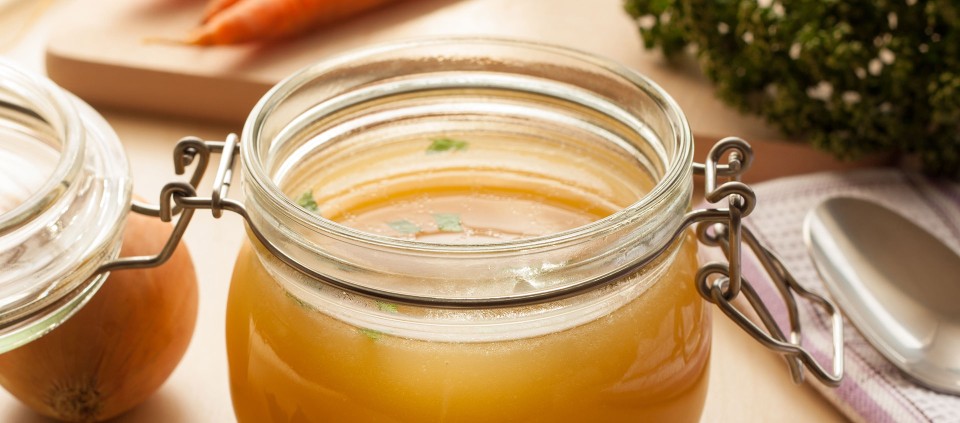Cooking Bone Broth in the Ayurvedic Kitchen

When it comes to nutrition, winter is the best time of year to reap the nourishing benefits of bone broth. You might be wondering … What’s all the fuss about bone broth? Can I make a vegetarian version? How is bone broth different than stock?
According to Bon Appetit, bone broth is essentially stock that’s been cooked an extra-long time. The Paleo diet made bone broth trendy, but it's long held a place in Ayurvedic medicinal cookery. From an Ayurvedic perspective, like increases like, while opposites bring balance. So, if you drink bone broth, you’re increasing bone health, since it contains many bone-building nutrients. (Turkey, for example, is rich in calcium, magnesium, potassium, phosphorous, and other trace minerals.) According to Ayurveda, the nails and hair are end products of the production of bone. For thousands of years, Ayurvedic physicians would gauge the strength of the hair and nails as a way of evaluating the strength of bones. The gelatin in bone broth contains collagen, which strengthens nails and hair, and is also strengthening for the bones—like increases like.
Eating bone broth is also seasonal eating. Animal protein is heavy and warming, and takes robust digestion to break down. In the winter, our digestive fire turns up to maintain internal body temperature, and meat has a warming post-digestive effect. With all the seemingly complicated food rules in Ayurveda, I have learned over a decade of study that, at the heart of Ayurvedic eating, is simply this: Eat seasonally and eat relaxed.
Yes, you can buy bone broth but, like any food, homemade with love is always superior. You can make broth with the bones of chicken, turkey, goat, beef, or even seafood. Be prepared: Bone broth is going to take some time. Poultry bones take a full day; beef or lamb can take a couple of days. I made lamb broth once. It took three days. I had just returned from Thailand, and had gotten very sick on the return trip and lost a lot of weight, leaving me depleted and exhausted. The broth brought me back to health. I drank a mug of it three times a day for a week.
If you favor a vegetarian diet, collect the scraps and ends from garlic, onions, celery, carrots, beets, herbs, and any other vegetables that require trimming. Keep them in the fridge or the freezer until you have enough make stock.
I make a simple broth in my crockpot. I have looked at many recipes and tweak them to make it my own, according to what I have in the pantry that day—and I like to add a little Ayurvedic flair (and anti-inflammatory benefits) with ginger and turmeric. There are no rules for how much of each ingredient to add—use what’s around and add spices to taste.
1 turkey carcass
Enough water to cover by 2 inches
Scrap ends of onions
Garlic cloves
Celery tops
Whole peppercorns
Fresh ginger, chopped
Turmeric (fresh or powdered)
Rosemary
Thyme
Combine all ingredients in a crockpot or in a heavy soup pot, and add enough water to cover them by two inches. On the stovetop, bring to a boil and then simmer for at least one hour and up to 24 hours, adding more water as needed. In a crockpot, set on high until it comes to a boil, and then on low for four to 24 hours. The bones will soften and break apart. When cooked, strain through a fine mesh into Mason jars and store in the refrigerator or freezer. Sip as is, or use as a base for soups and stews.
© Kripalu Center for Yoga & Health. All rights reserved. To request permission to reprint, please email editor@kripalu.org.
Erin Casperson, Lead Kripalu Faculty and Director of the Kripalu School of Ayurveda, is passionate about sharing how the ancient practices of Ayurveda can be applied to modern-day living.
Full Bio and Programs